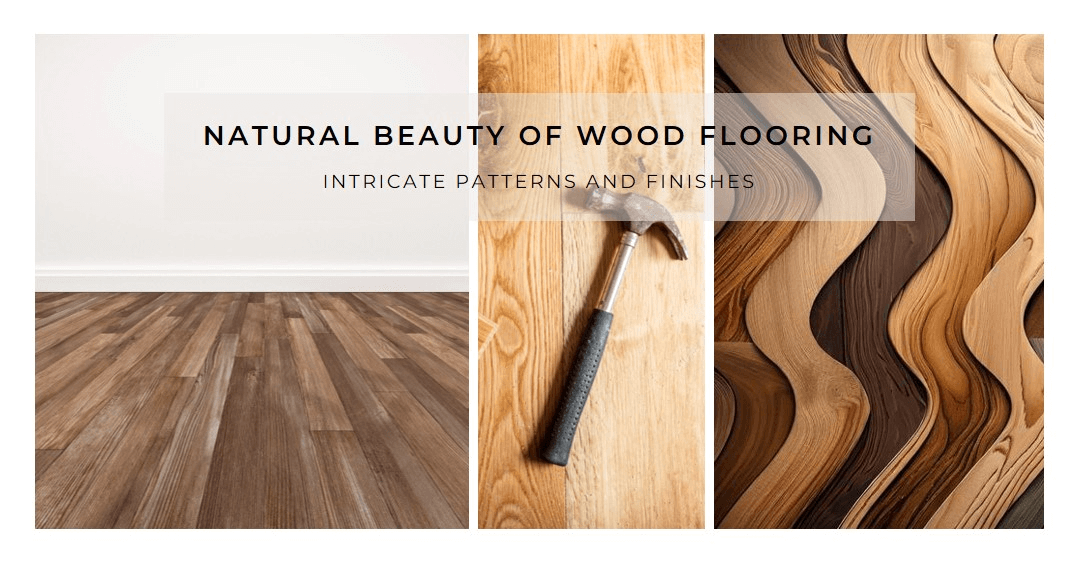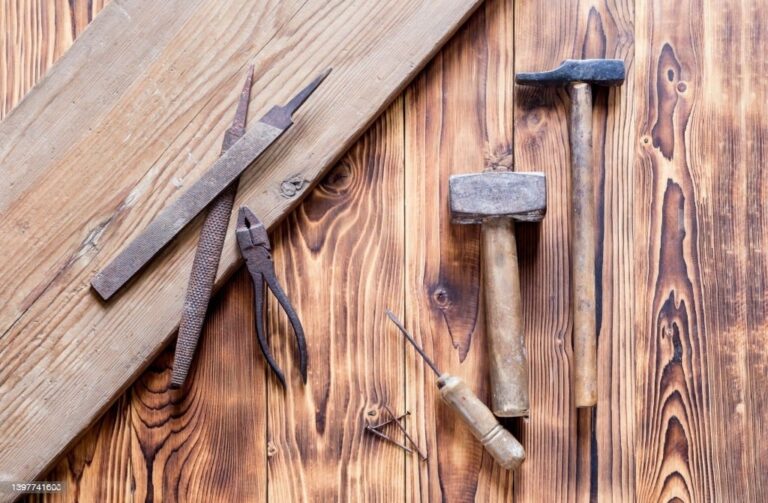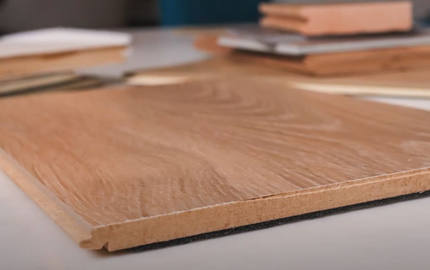Wood Flooring: A Comprehensive Guide To Types, Finishes, And Designs
Welcome to our comprehensive guide on wood flooring. As experts in the flooring industry, we are excited to share our knowledge and experience with you to help you make an informed decision on your flooring needs.

Wood flooring is a timeless and versatile choice that can enhance any interior design style, and we are here to guide you through the different types, finishes, and designs available to suit your space.
In this guide, we will explore:
- The differences between solid wood and engineered wood flooring
- The various types of wood flooring available
- The manufacturing styles used to create them
We will also delve into:
- The different finishes and patterns that can be applied to wood flooring
- The process of choosing and installing the right type of flooring for your home or business
Additionally, we will provide helpful tips and advice on how to properly maintain and care for your wood flooring.
So, let’s get started on this journey to discovering the elegance and beauty of wood flooring.
Understanding Wood Flooring
You’re about to discover why wood floors are a popular choice for both residential and commercial spaces, and how they can add value and sophistication to your property.
Wood flooring is a natural and durable flooring option that can withstand the test of time. There are many types of wood flooring available, including solid hardwood flooring, engineered flooring, bamboo flooring, and more.
Solid wood flooring is made from one solid piece of wood and is available in a variety of wood species, grades, and finishes.
Engineered flooring, on the other hand, is made from layers of wood veneer and plywood and is designed to be more stable and resistant to moisture than solid wood flooring.
Bamboo flooring is a popular eco-friendly option that is made from bamboo grass, which is a renewable resource.
With so many options available, it’s important to understand the types of hardwood flooring and their unique characteristics to choose the best option for your space.
Solid Wood vs. Engineered Wood Flooring
When it comes to choosing between solid and engineered wood flooring, there are a few key differences to consider.
Solid wood flooring is made from a single piece of wood and is considered the traditional choice. It offers a classic look and feel, and can be sanded and refinished multiple times, making it a long-lasting option. However, it is also susceptible to moisture and temperature changes, and can be prone to warping or cupping if exposed to too much humidity. Additionally, solid wood flooring can be more expensive than engineered wood flooring due to the higher cost of materials and installation.
On the other hand, engineered wood flooring is made up of a layer of wood on top of a base layer of plywood or fiberboard. This layering process creates a more stable flooring option that is less susceptible to expansion and contraction due to changes in temperature and humidity. Engineered wood flooring also tends to be more affordable than solid wood flooring and can be easier to install. However, it may not have the same long-lasting potential as solid wood flooring, as it cannot be sanded and refinished as many times due to the thinner layer of wood on top. Additionally, the grain pattern of engineered wood flooring may not be as consistent as solid wood flooring due to the layering process.
Ultimately, the choice between solid and engineered wood flooring will depend on your specific needs and preferences for your space.
Exploring Wood Flooring Types
Get ready to discover the beauty and versatility of different options available for enhancing your space with warmth and sophistication. There are various types of wood flooring to choose from, each with its own unique characteristics and benefits.
From natural woods like oak, maple, and hickory to bamboo and laminate flooring brands, let’s take a closer look at the different types of flooring available.
- Solid hardwood floors: Made from a single piece of wood, solid hardwood floors are durable and can last for decades with proper care. They come in a variety of wood species, finishes, and widths, making them a popular choice for many homeowners.
- Engineered hardwood floors: Made from multiple layers of plywood and topped with a thin layer of natural wood, engineered hardwood floors are more resistant to moisture and humidity than solid wood. They also offer a wider range of design options and can be installed over concrete subfloors.
- Bamboo flooring: Made from bamboo grass, this type of flooring is eco-friendly, durable, and comes in a variety of colors and finishes. It’s also more resistant to moisture and scratches than traditional hardwood floors.
- Laminate flooring: Made from synthetic materials, laminate flooring is a budget-friendly option that mimics the look of hardwood floors. It’s easy to install and maintain, making it a popular choice for busy households.
When it comes to choosing the right type of flooring for your space, consider the level of foot traffic and moisture in the area, as well as your budget and design preferences.
With so many options available, you’re sure to find the perfect type of flooring to enhance the beauty and warmth of your home.
Solid Wood Manufacturing Styles
Experience the timeless beauty and durability of solid hardwood floors, crafted from a single piece of wood to create a warm and inviting atmosphere in your home.
Solid wood flooring is made from planks cut from a single piece of wood, typically ranging in thickness from 3/4 inch to 5/16 inch. These solid planks are available in a wide variety of popular species, including oak, maple, cherry, and walnut, each with its unique characteristics and color variations.
Solid wood flooring can be cut in a variety of flooring cut patterns, including plain sawn, quarter sawn, and rift sawn. Plain sawn is the most common cut pattern, resulting in a wood grain pattern that is more pronounced and natural-looking. Quarter sawn results in a more consistent grain pattern, while rift sawn creates a more linear and uniform look.
The manufacturing process involves carefully selecting the wood, cutting it into planks, and then drying and milling the planks to create a smooth, uniform surface. Solid wood flooring is a durable and long-lasting option that can be sanded and refinished multiple times to maintain its beautiful appearance for years to come.
Types of Wood Flooring Finishes
Discover how the different finishes available for your hardwood floors can affect their durability, maintenance, and overall aesthetic appeal.
When choosing a finish for your wood flooring, it’s important to consider the type of wood you have and the environment in which it will be installed.
Oil finishes are a popular choice for those who want a natural, matte look. They penetrate the wood to enhance the natural grain and color, but can require more maintenance than other finishes.
Lacquer finishes, on the other hand, provide a glossy look and are more durable, but can be harder to repair if damaged.
Varnish finishes are similar to lacquer, but are more durable and provide a harder, more protective coating.
Prefinished hardwood flooring is another option to consider. With this type of flooring, the finish is factory-applied, which provides a more consistent and durable finish.
Luxury vinyl flooring is a newer option that mimics the look of natural woods and can come with different finishes.
If you’re looking for a sustainable flooring option, consider finishes that are eco-friendly and low in VOCs (volatile organic compounds).
When choosing a finish, it’s important to do your research and consult with hardwood flooring brands to find the best option for your needs.
Wood Floor Patterns and Designs
Now that we’ve covered the types of wood flooring finishes, let’s delve into the world of wood floor patterns and designs.
The pattern and design you choose can transform your space from ordinary to extraordinary. Wood flooring is known for its versatility and ability to complement any interior design style.
Whether you’re looking for a classic, timeless look or a more modern, contemporary feel, there’s a wood floor pattern and design that’ll suit your needs. Herringbone and parquet are two of the most popular wood floor patterns.
Herringbone involves laying planks at a 90-degree angle to each other, creating a zig-zag pattern. This pattern can make a room appear longer or wider, depending on the direction of the planks.
Parquet, on the other hand, involves laying small pieces of wood in a geometric pattern. This pattern can be simple or complex, depending on the design.
Wide plank flooring is another popular option, which involves using wider planks to create a more rustic, country feel. These are just a few examples of the many wood floor patterns and designs available.
Choosing and Installing Wood Flooring
Before you decide on and install your new wooden floors, there are several factors to consider.
First, you need to determine the level of durability you require. Some wood flooring options are more durable than others, and some domestic wood flooring types may better suit your needs than others.
Additionally, cost is a significant factor when choosing and installing wood flooring. Different types of wood flooring can vary in price, so it’s important to find a durable wood flooring choice that fits your budget.
Maintenance is another critical factor to consider when choosing and installing wood flooring. Some types of flooring require more maintenance than others, so it’s essential to weigh the upkeep requirements against the level of durability and aesthetic appeal.
Speaking of aesthetics, the type of flooring you choose can have a significant impact on the overall look and feel of your space. There are various finishes and designs to choose from, so it’s essential to select a wood flooring choice that complements your décor.
Finally, you must decide whether to DIY or hire a professional to install your wood flooring. While DIY can save you money, professional installation may be necessary for some types of wood flooring to ensure proper installation and prevent damage to your new floors.
Maintenance and Care for Wood Flooring
Maintaining and caring for your wooden floors is essential to keep them looking their best for years to come.
It’s crucial to prevent moisture damage to your wooden floors as it can cause the wood to warp, crack, or even rot. To avoid any moisture damage, make sure to wipe up any spills immediately and avoid using too much water when cleaning your floors.
Additionally, placing a doormat at the entrance to your home can help to prevent any excess moisture from coming into contact with your wooden floors.
In terms of cleaning, it’s recommended to sweep or vacuum your wooden floors regularly to remove any dirt or debris that can scratch the surface.
When it comes to mopping, make sure to use a damp mop and a gentle cleaning solution that is specifically designed for wooden floors. Avoid using harsh chemicals or abrasive cleaners as they can damage the finish.
If you have any concerns about the hardness level of your wooden floors, consider using a rug or mat in high traffic areas to prevent any scratches or dents.
In case you’d like to consider alternatives to wooden flooring, some waterproof laminate flooring and ceramic tiles options, as well as laminate flooring brands, can provide durability and resilience against moisture damage.
Frequently Asked Questions
Curious about the ins and outs of wooden floors? We’ve got you covered with some common questions answered.
Firstly, solid wood and laminate are two vastly different materials. Solid wood flooring is made entirely out of natural wood, while laminate flooring is a synthetic product made of multiple layers with a photographic layer that resembles real wood. Laminate can be a more budget-friendly option but lacks the durability and longevity of solid wood. On the other hand, solid wood can be refinished and restored throughout its lifespan, making it a worthwhile investment in the long run.
If you have pets, you may be wondering if wood flooring is a practical choice. The answer is yes! With regular maintenance, hardwood flooring can withstand pet scratches and stains. However, if you’re concerned about scratches, cork flooring is a great alternative as it is naturally resistant to scratches and dents.
Additionally, eco-friendly flooring options such as bamboo, vinyl, and laminate are durable and easy to clean, making them pet-friendly choices as well.
In terms of maintaining and cleaning wood flooring, it’s important to regularly sweep and vacuum to prevent scratches and dirt buildup. Avoid using water or harsh chemicals when cleaning, and instead opt for a cleaner specifically formulated for wood floors. By following these simple steps, your wood flooring will look beautiful and last for years to come.
Conclusion
Overall, wood flooring is a timeless and versatile choice that can enhance any space with warmth and sophistication. By understanding the differences between solid and engineered wood and exploring the various types, finishes, and designs available, you can make an informed decision that suits your needs and style.
Whether you prefer the classic look of hardwood floors or the durability and versatility of engineered wood, there are countless options to choose from. With proper care and maintenance, your wood flooring can last for many years to come, adding value and beauty to your home or business.
So why not consider wood flooring for your next renovation or upgrade project? It’s a decision that you won’t regret.


